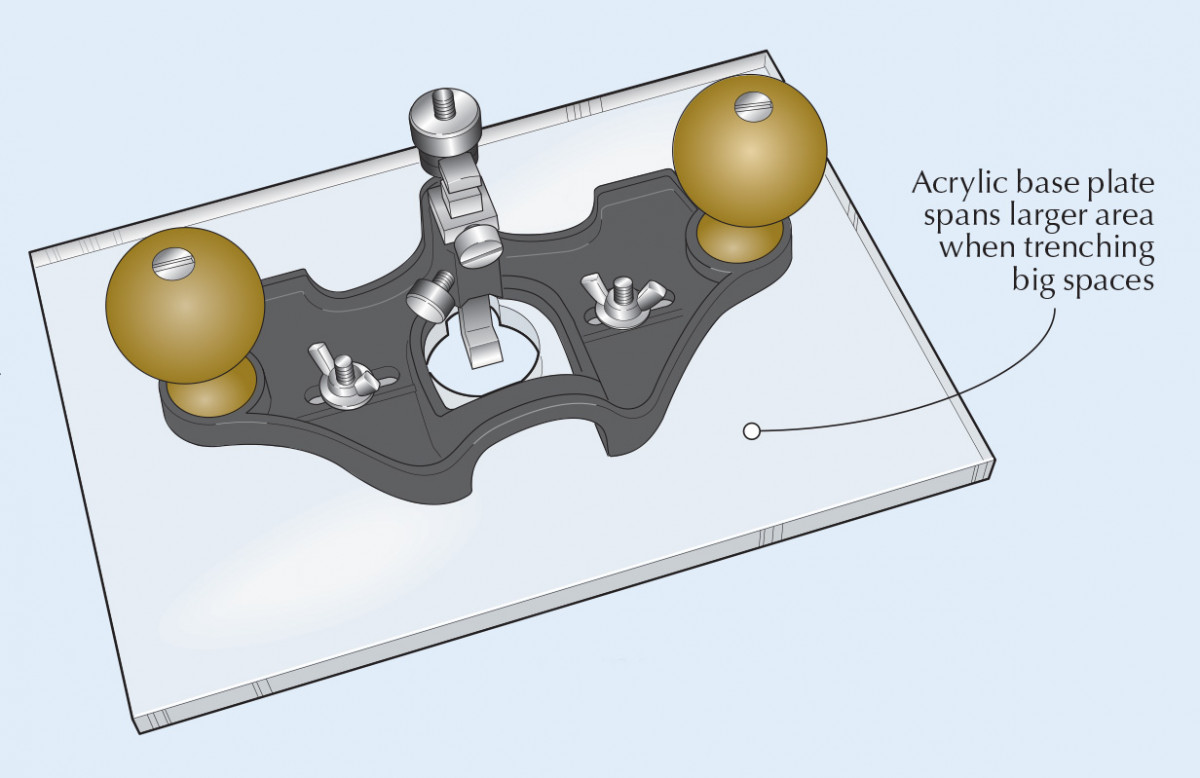We may receive a commission when you use our affiliate links. However, this does not impact our recommendations.

I had a project on which I needed to rout out a large area about 3⁄8” deep. It was a wooden case for a Nook reader, and the eReader had to fit into the excavation.
I had poor luck with my power router. It failed miserably. I had poor visibility of the bit, and the tool was extremely aggressive.
I decided to break out my large router plane, but the area to be routed was too large for it to span the opening from edge to edge.
A light bulb went off, and I decided to make an acrylic auxiliary base for the router plane. The tool was already drilled with slots for an edge fence, so it was simply a matter of drilling the auxiliary base for 5⁄16” holes to align with these slots and another 11⁄4” hole for the router blade to pass through. I used two 1⁄4“x20 1” T-bolts, flat washers and wing nuts to fasten the base to the router. I had to counterbore the bottom of the base to fit the T portion of the T-bolt. I used a Forstner bit and chisel to shape the counterbore.
I eyeballed the hole that the blade came through – dumb. Let my experience be helpful to you. The blade came down on the plastic. Measure where the blade will come down before you drill.
I used a 3⁄8” acrylic sheet about 6 1⁄2” x 9 1⁄2“, but you can vary the dimension to suit your situation. Just make it wide enough to span the work edge to edge when at the extreme.
I was quite happy with the added stability of the router and I was able to plane the excavation quickly and smoothly. I think I will also find this auxiliary base useful to excavate fields in relief carvings. –Walter Lees
Here are some supplies and tools we find essential in our everyday work around the shop. We may receive a commission from sales referred by our links; however, we have carefully selected these products for their usefulness and quality.








